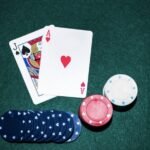Behind the flashy lights and spinning reels of slot machines lies a world of intricate mathematics that governs every aspect of gameplay. Understanding the fundamentals of slot machine math, including odds, probability, and return, is essential for both players and developers alike. Let’s delve into the mathematics behind slot machines:
1. Odds and Probability
- Reel Strips: Slot machines use virtual “reel strips” containing symbols to determine game outcomes. Each reel strip has a set number of symbols, with some symbols appearing more frequently than others.
- Symbol Distribution: The distribution of symbols on the reel strips determines the odds of landing winning combinations. Symbols with higher payouts are usually less common, while lower-paying symbols appear more frequently.
- Random Number Generators (RNGs): Modern slot machines use RNGs to generate random outcomes for each spin. These algorithms ensure that each spin is independent and unpredictable, with no correlation between one spin and the next.
2. Return to Player (RTP)
- Definition: The Return to Player (RTP) is a theoretical measure of the percentage of wagered money that a slot machine is expected to pay back to players over time. For example, a slot machine with an RTP of 95% will, on average, return $95 for every $100 wagered.
- House Edge: The house edge is the inverse of the RTP and represents the casino’s advantage over players. For example, if a slot machine has an RTP of 95%, the house edge is 5%.
- Long-Term Perspective: While individual spins may result in significant wins or losses, the RTP and house edge are calculated over millions of spins, providing a long-term perspective on the game’s profitability for both players and casinos.
3. Volatility and Variance
- Volatility: Slot machines are often categorized by their volatility, which refers to the frequency and size of payouts. Low volatility slots offer frequent but smaller wins, while high volatility slots feature less frequent but larger wins.
- Variance: Variance is a measure of the distribution of payouts in a slot machine game. Low-variance slots have a relatively steady stream of small wins, while high-variance slots have more infrequent but higher-value wins.
4. Paylines, Bet Sizes, and Payouts
- Paylines: Slot machines can have a single payline or multiple paylines, which are the lines across the reels where winning combinations can occur. The number of paylines affects the odds of winning and the size of potential payouts.
- Bet Sizes: Players can typically adjust their bet size by selecting the number of paylines and the bet per line. Higher bets increase the potential payouts but also the risk of losing money faster.
- Payouts: Slot machines offer a range of payouts for different combinations of symbols. Paytables display the potential payouts for each winning combination based on the bet size.
Conclusion
Slot machine math is a complex and fascinating field that underpins every aspect of slot gameplay. By understanding the principles of odds, probability, RTP, and variance, players can make informed decisions about their gaming strategy and expectations. For developers, a deep understanding of slot machine math is essential for creating engaging and rewarding games that appeal to players while maintaining profitability for casinos.











